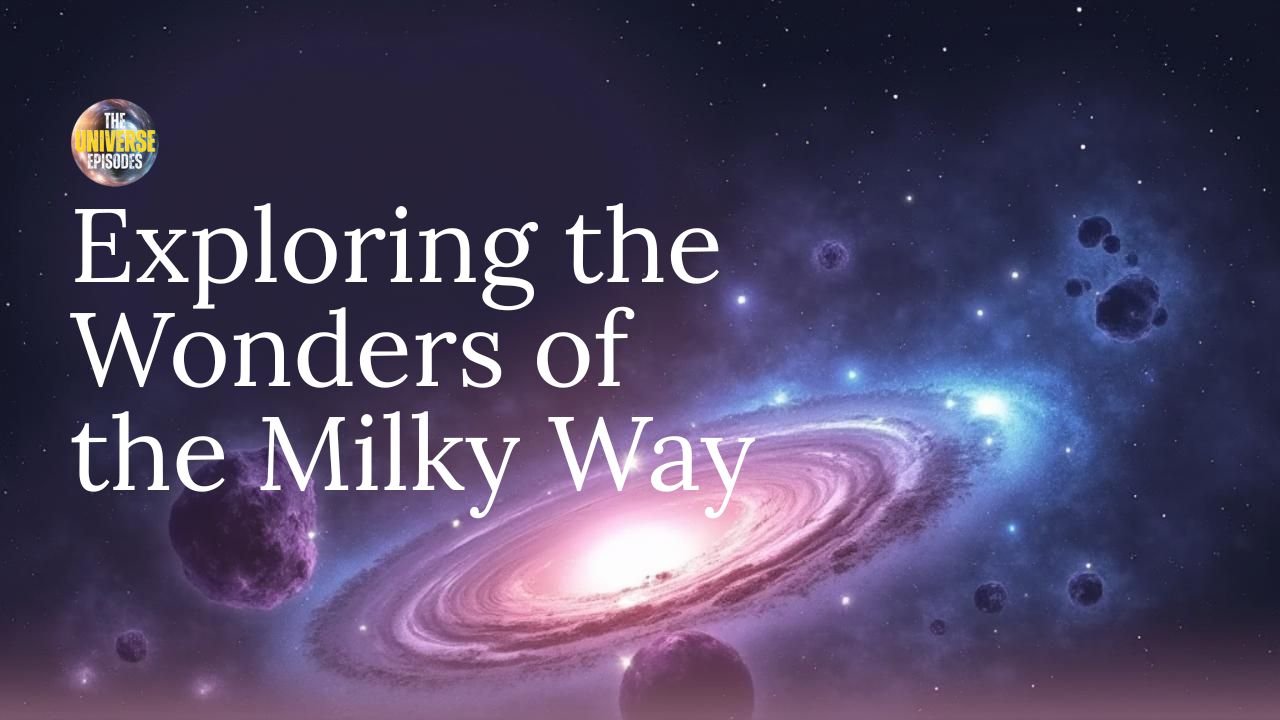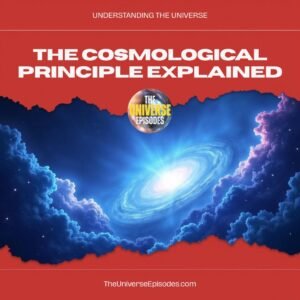The Big Bang theory is the prevailing cosmological model for the observable universe from the earliest known periods through its subsequent large-scale evolution. It describes how the universe expanded from a very high-density and high-temperature state, and offers a comprehensive explanation for a broad range of phenomena, including the abundance of light elements, the cosmic microwave background (CMB) radiation, and large scale structure. However, the Big Bang theory has its limitations, particularly in explaining the uniformity and flatness of the universe on large scales. This is where the concept of cosmic inflation comes into play.
Cosmic inflation is a theoretical framework that proposes a rapid exponential expansion of the early universe, driven by a hypothetical scalar field called the inflaton. This period of inflation is thought to have occurred within the first fraction of a second after the Big Bang, causing the universe to expand by a factor of at least 10^26 in a very short amount of time. The idea of cosmic inflation was first proposed by physicist Alan Guth in 1980, and it has since become an integral part of modern cosmology. Inflationary theory not only addresses the shortcomings of the Big Bang model, but it also provides a mechanism for generating the primordial density fluctuations that eventually led to the formation of galaxies and other large-scale structures in the universe.
Key Takeaways
- The Big Bang Theory proposes that the universe began as a hot, dense point and expanded rapidly, known as cosmic inflation.
- Inflationary fields and quantum fluctuations are believed to have played a crucial role in driving the rapid expansion of the early universe.
- Evidence for cosmic inflation includes the cosmic microwave background radiation and the large-scale structure of the universe.
- Repeating cosmic inflation is a possibility that could explain the uniformity and flatness of the universe.
- Inflation has had a significant impact on the structure of the universe, leading to the formation of galaxies and large-scale structures.
The Role of Inflationary Fields and Quantum Fluctuations
Inflationary fields are scalar fields that are responsible for driving the rapid expansion of the early universe during the period of cosmic inflation. The most widely studied inflationary model is based on the inflaton field, which is characterized by its potential energy function. During inflation, the inflaton field undergoes a phase of slow roll, during which its kinetic energy is much smaller than its potential energy. This slow roll phase leads to a period of accelerated expansion, effectively stretching out any pre-existing inhomogeneities in the fabric of space-time and making the universe more homogeneous and isotropic on large scales.
Quantum fluctuations are another crucial aspect of inflationary theory. According to quantum mechanics, even in a vacuum state, there are always fluctuations in the values of fields at every point in space. During inflation, these quantum fluctuations are stretched to cosmological scales, leading to tiny variations in the density of matter and radiation across different regions of space. These density perturbations serve as the seeds for the formation of large-scale structures in the universe, such as galaxies and galaxy clusters. The quantum nature of these fluctuations also gives rise to anisotropies in the cosmic microwave background radiation, which have been observed and measured with great precision by satellite missions such as the Cosmic Background Explorer (COBE) and the Wilkinson Microwave Anisotropy Probe (WMAP).
Evidence for Cosmic Inflation
Several lines of observational evidence support the idea of cosmic inflation. One of the most compelling pieces of evidence comes from measurements of the cosmic microwave background (CMB) radiation, which is a remnant of the hot, dense state of the early universe. The CMB exhibits a nearly uniform temperature across the sky, with small temperature fluctuations at the level of one part in 100,000. These fluctuations are consistent with the predictions of inflationary theory, which attributes them to quantum fluctuations that were stretched to cosmological scales during the period of inflation.
Another important piece of evidence for cosmic inflation comes from studies of the large-scale structure of the universe. Observations of galaxy clustering and cosmic web-like structures are consistent with the formation of large-scale structures from primordial density perturbations generated during inflation. Additionally, measurements of the polarization of the CMB provide further support for inflationary theory, as they reveal patterns that are consistent with gravitational waves produced during inflation.
Furthermore, direct evidence for inflation may come from future observations of primordial gravitational waves, which are ripples in the fabric of space-time predicted by inflationary models. These gravitational waves would imprint a distinct signature on the polarization patterns of the CMB, providing a smoking gun for the existence of cosmic inflation.
The Possibility of Repeating Cosmic Inflation
One intriguing aspect of cosmic inflation is its potential for repetition. Inflationary theory suggests that once inflation begins in a particular region of space-time, it can continue indefinitely in different regions, leading to a multiverse scenario where our observable universe is just one among many bubble universes. This idea stems from the concept of eternal inflation, which posits that quantum fluctuations can trigger new episodes of inflation within certain regions of space-time, leading to the creation of new bubble universes with their own distinct properties.
The possibility of repeating cosmic inflation has profound implications for our understanding of the larger cosmos and raises fundamental questions about the nature of reality and our place within it. If eternal inflation is indeed occurring on a cosmic scale, it would imply that our universe is just one among an infinite ensemble of universes, each with its own set of physical laws and constants. This idea challenges traditional notions of uniqueness and predictability in cosmology, and it has sparked intense debate among physicists and philosophers about how to test and interpret such a far-reaching hypothesis.
The Impact of Inflation on the Structure of the Universe
Cosmic inflation has had a profound impact on shaping the large-scale structure of the universe as we observe it today. The quantum fluctuations generated during inflation provided the initial seeds for the formation of galaxies, galaxy clusters, and other cosmic structures through gravitational instability. As these density perturbations grew over time under the influence of gravity, they led to the formation of filaments, voids, and other characteristic patterns seen in the distribution of matter on cosmic scales.
Inflationary theory also provides an explanation for the observed uniformity and isotropy of the universe on large scales. The rapid expansion during inflation effectively smoothed out any pre-existing irregularities in the early universe, leading to a high degree of homogeneity and isotropy that is consistent with observations. This uniformity is crucial for explaining why galaxies are distributed fairly evenly throughout space and why the CMB exhibits such a high degree of isotropy.
Furthermore, inflationary models make specific predictions about the statistical properties of primordial density perturbations, such as their amplitude and spectral index. These predictions have been tested against observational data from galaxy surveys and CMB measurements, providing further support for inflation as a key driver in shaping the large-scale structure of the universe.
Challenges and Controversies in Understanding Cosmic Inflation

While cosmic inflation has garnered widespread support within the scientific community, it is not without its challenges and controversies. One major challenge lies in identifying a fundamental particle or field that can serve as the inflaton responsible for driving inflation. Despite extensive theoretical work and experimental searches, no direct evidence for such a particle or field has been found to date.
Another area of controversy surrounds the issue of fine-tuning in inflationary models. Some critics argue that certain parameters in these models need to be finely tuned in order to produce observable outcomes that match with our observations. This has led to debates about whether inflation is truly a generic feature of fundamental physics or if it requires specific initial conditions or tuning to produce viable predictions.
Additionally, there are ongoing debates about how to reconcile inflation with other aspects of theoretical physics, such as quantum gravity and string theory. These areas present significant challenges for understanding how inflation fits into a more comprehensive framework that unifies all fundamental forces and particles.
The Future of Cosmic Inflation Research
The future of cosmic inflation research holds great promise for advancing our understanding of the early universe and its subsequent evolution. One key area of focus is on improving our observational constraints on inflationary models through more precise measurements of the CMB and other cosmological probes. Future experiments such as the Simons Observatory and CMB-S4 aim to map out the polarization patterns of the CMB with unprecedented sensitivity, which could provide crucial insights into the physics of inflation.
Another important direction for research involves exploring alternative models of inflation that go beyond the standard paradigm. These include models with multiple fields, non-canonical kinetic terms, or modifications to general relativity that could lead to distinct observational signatures compared to traditional single-field models.
Furthermore, efforts to connect inflation with other areas of theoretical physics, such as quantum gravity and particle physics, will continue to be a major focus for researchers seeking a more complete understanding of how inflation fits into a unified framework.
In conclusion, cosmic inflation represents a revolutionary concept in modern cosmology that has reshaped our understanding of how the universe began and evolved. While it has provided compelling explanations for many observed phenomena, there are still significant challenges and controversies that remain to be addressed. The ongoing pursuit of understanding cosmic inflation promises to yield new insights into fundamental physics and our place within the vast cosmos.
If you’re interested in learning more about cosmic inflation and its potential recurrence in our universe, you may want to check out the blog section of The Universe Episodes website. They have a fascinating article discussing the latest theories and research on the topic, providing valuable insights into the causes and potential future occurrences of cosmic inflation. You can find the article here.
FAQs
What is cosmic inflation?
Cosmic inflation is a theory in physical cosmology that suggests the universe underwent a rapid and exponential expansion in the early stages of its existence. This expansion is thought to have occurred just fractions of a second after the Big Bang.
What causes cosmic inflation?
The exact cause of cosmic inflation is still a topic of research and debate among physicists and cosmologists. One leading theory is that it was driven by a hypothetical field called the inflaton field, which is thought to have permeated the universe during its early stages.
Could cosmic inflation happen again within our universe?
It is currently unknown whether cosmic inflation could happen again within our universe. Some theories suggest that inflation could be a recurrent phenomenon, while others propose that it may have been a one-time event. Further research and observations are needed to determine the likelihood of cosmic inflation occurring again.
























